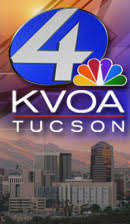 "Most young journalists coming out of universities, such as the Walter Cronkite School of Journalism and Mass Communication at Arizona State University, are “multi-media journalists the day they step out of college,” says Jerry Gumbert, president and chief executive officer of Audience Research & Development (AR&D), a news consulting firm based in Fort Worth, Texas. “They’re a very sophisticated breed that’s been used to operating their own websites to show and tell their own stories. There’s something to be said for a story teller having control of all facets of telling a story. It’s the new normal.”FROM AZBiz.com
"Most young journalists coming out of universities, such as the Walter Cronkite School of Journalism and Mass Communication at Arizona State University, are “multi-media journalists the day they step out of college,” says Jerry Gumbert, president and chief executive officer of Audience Research & Development (AR&D), a news consulting firm based in Fort Worth, Texas. “They’re a very sophisticated breed that’s been used to operating their own websites to show and tell their own stories. There’s something to be said for a story teller having control of all facets of telling a story. It’s the new normal.”FROM AZBiz.com
KVOA staffers fear changes
from newsroom reorganizationBy David Hatfield, Inside Tucson Business

Published on Saturday, September 26, 2009
Sometime, supposedly in October, viewers watching local news on KVOA 4 will see the results of what station insiders are looking upon as a sea change in the way TV news is gathered. Reporters and videographers, as separate job titles, will be gone replaced with the title multi-media journalist.
It means reporters will be carrying cameras and shooting their own vide

o and videographers will be out researching and reporting their own news stories.
Pejoratively the new job title is being nicknamed “one-man band” or “VJ,” short for video jockey.
* Print this story
* Email this story
* Post a Comment
* ShareThis
Actually the idea for multi-media journalism has been around for a few years as media companies try to meet the challenge to deliver news and information on multiple platforms. Indeed, Ed Tribble and Tyler Wing already carry that title at KVOA 4, though Tribble is leaving to take a similar job at KPNX, the NBC station in Phoenix.
What has put KVOA’s newsroom on edge is the manner in which the station is making the changes. Several weeks ago at a station meeting, staffers were told there would be a reorganization of the newsroom. Besides the change to multi-media journalist, KVOA is changing its news assignment desk,
which is usually staffed by one person per shift, into an area for “content managers” and “content producers” who will be responsible for updating the station’s website.
KVOA’s newsroom staff consists of about 45 employees. Those directly involved in these changes say they are being told they can audition for the new job titles, which has left at least a few of them with the distinct implication that not all will make the cut. Beyond that, KVOA is advertising it has openings for multi-media journalists as well as content managers and producers.
KVOA’s news director Kathleen Choal didn’t respond to a request to talk about the changes.
The announcement rippled through other newsrooms. And, for good reason, by the end of next year every TV station and print media outlet in the country will be using multi-media journalists to some degree, says Jerry Gumbert, president and chief executive officer of Audience Research & Development (AR&D), a news consulting firm based in Fort Worth, Texas. He says his company has 150 media clients, from both traditional electronic and print media companies. KVOA is an AR&D client.
Gumbert says media companies will still put together what he calls “a polished finished product,” either a TV newscast or a newspaper but the new normal he says is that consumers are going online to get news and information. More specifically, there are three peaks during a typical day, from 8:30 a.m. to 10:30 a.m. after people arrive at work, from 11:30 a.m. to 1 p.m. just before going out to lunch and 3:30 p.m. to 5 p.m. just before going home.
“As any producers of a product do, we have to follow the consumer. And the consumer has spoken as to how they want their news. They want it when they want it and where they want it and if we don’t do that, then somebody else will,” Gumbert said in an interview. “We aren’t blazing any new trails. We either have to follow the changing media consumer to get them what they want, or we’ll be obsolete.”
Gumbert says he doesn’t get involved with how stations make the change.
Many of the early TV station adoptees of the multi-media journalism concept did it as a cost-saving measure. Often they were not the strongest news stations to begin with. In some of those cases, it was a last-ditch effort and hasn’t proven successful.
Other pushback has come because it requires employees to change. “Nobody likes change, it’s uncomfortable,” Gumbert said, adding, “Nothing is easy to the unwilling. It’s really about desire and passion.”
MORE...
 Learn to use Twitter & Facebook—and no matter what tools you are using or how you are communicating with an audience, ACCURACY is the cornerstone for ethics in journalism.
Learn to use Twitter & Facebook—and no matter what tools you are using or how you are communicating with an audience, ACCURACY is the cornerstone for ethics in journalism. the students attending a journalism ethics workshop wondering how many of them wanted to get a job after graduating college. Then he told them they better learn how to use Facebook and Twitter.
the students attending a journalism ethics workshop wondering how many of them wanted to get a job after graduating college. Then he told them they better learn how to use Facebook and Twitter. 


